What are the Inspection Requirements for Fall Protection Systems?
Regularly inspecting your fall protection systems is crucial for keeping workers safe. This article breaks down the requirements you need to pay attention to.
Working at height is inherently dangerous. The risks are significant, and the consequences of overlooking a simple equipment check can be fatal. Across industries like construction, utilities, steel, and manufacturing, fall protection gear plays a vital role in keeping workers safe.
But even the best fall protection equipment won’t work as intended if it hasn’t been properly inspected. So, how often should you inspect your fall protection systems, and whom in your organization should do them?
This article outlines the inspection requirements for fall protection systems, when those inspections must occur, what to look for, and how to manage documentation and training to build a safer, more compliant workplace.
Here’s what we will cover:
- What are the Regulations Behind Fall Protection Inspections?
- When Should You Conduct Fall Protection Inspections?
- What Should You Look for During a Fall Protection Inspection?
- Should you Document and Record Your Fall Protection Inspections?
- When Should You Remove Fall Protection Equipment from Service?
- Is Fall Protection Training an OSHA Requirement?
- Do You Need a Working at Height Rescue Plan?
- How Can You Avoid Compliance Issues?
- Final Thoughts
What are the Regulations Behind Fall Protection Inspections?
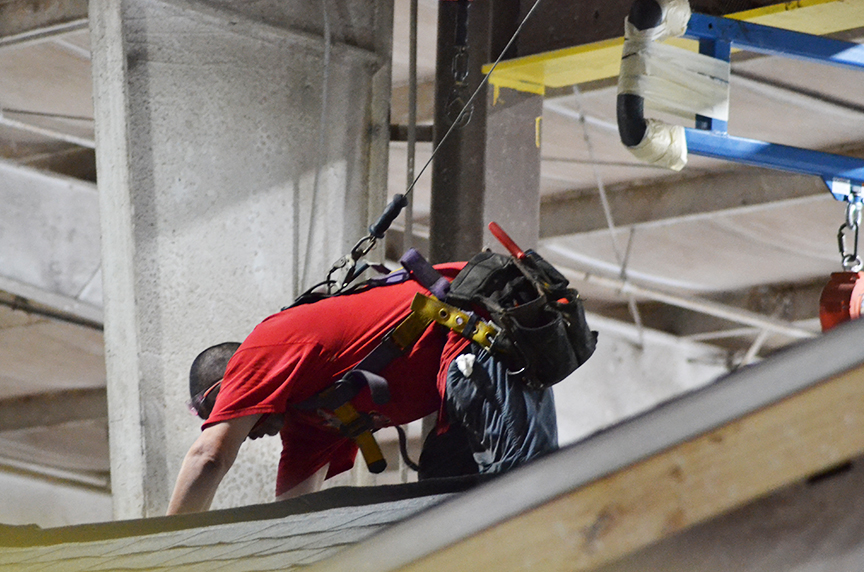
OSHA’s standards are very clear when it comes to inspection requirements.
Fall protection equipment must be inspected before each use by the person wearing it. This is outlined in 29 CFR 1910.140 and 1926.502(d)(21). In addition to these daily inspections, OSHA also requires periodic evaluations by a competent person. These more formal inspections must occur at least once a year, or more frequently depending on the environment or manufacturer’s recommendation.
ANSI Z359 standards expand on these requirements with more detailed best practices. For example, ANSI Z359.2 outlines inspection roles and intervals, while Z359.11 and Z359.13 define the criteria for harnesses and lanyards, including when equipment should be removed from service.
When Should You Conduct Fall Protection Inspections?
There are three distinct types of inspections that must be performed to maintain a safe and compliant fall protection program.
Pre-Use Inspection
Before each shift, every authorized user is responsible for inspecting their own equipment. This includes checking for any damage to webbing, hardware, or labeling that could affect the performance of the gear. These inspections are visual and tactile, and they help catch minor damage before it becomes a major issue.
Periodic (Annual) Inspection
At least once every 12 months, a formal inspection must be conducted by a competent person. This individual must be trained to identify existing or potential hazards in personal fall protection equipment and systems. These inspections are more thorough and must be documented.
Post-Fall Inspection
Any time a fall arrest system has been exposed to the forces of a fall, it must be removed from service and evaluated by a competent person. The equipment should not be returned to use until it has been deemed safe or replaced altogether.
What Should You Look for During a Fall Protection Inspection?
Each component of a fall protection system has specific inspection criteria. Here’s what inspectors and users should pay attention to:
Harnesses and Webbing
Inspectors should look for frayed edges, broken fibers, pulled stitching, burns, or signs of chemical or UV damage. All labels must be present and legible. Missing or unreadable labels can be grounds for removal from service.
Hardware and Connectors
D-rings, buckles, snap hooks, and adjusters should be free of cracks, corrosion, and any signs of deformation. Hardware should operate smoothly without sticking or sharp edges that could compromise webbing integrity.
Lanyards and Shock Absorbers
Lanyards should be free of knots, cuts, excessive wear, or broken stitching. For energy absorbers, check the deployment indicator. If it shows signs of engagement, the unit must be taken out of service.
Self-Retracting Lifelines (SRLs)
You should inspect the SRL for housing, cable or webbing, retraction function, and locking mechanism. The line should extend and retract smoothly and lock under sudden force. Inspect the entire length for cuts, frays, birdcaging (if wire rope), and discoloration.
Anchorage Points and Lifeline Systems
Fixed and engineered systems must be inspected for loose hardware, corrosion, structural cracks, or signs of overloading.
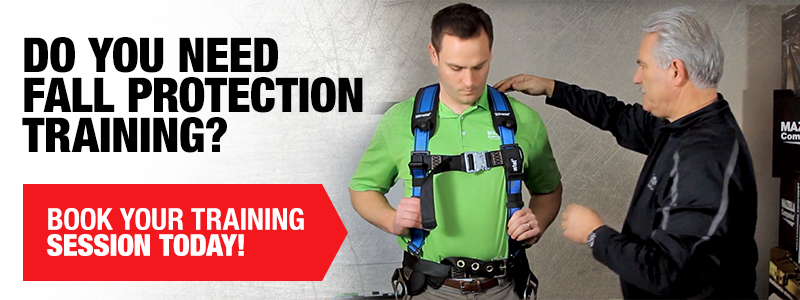
Should you Document and Record Your Fall Protection Inspections?
While OSHA requires pre-use inspections, it doesn’t mandate written documentation for those daily checks. However, formal periodic inspections must be documented in writing. That record should include:
- Date of inspection
- Inspector’s name and qualifications
- Equipment manufacturer, model, and serial number
- Pass/fail status
- Any corrective actions or recommendations
Who Is Responsible for Inspecting Fall Protection Systems?
To stay compliant and keep workers safe, it’s important to assign clear responsibilities for inspection, use, and oversight of all fall protection systems at your job site. Below is a breakdown of key roles and responsibilities:
| Role | Inspection Responsibilities |
| Authorized Person | Performs daily pre-use checks after training by a competent person |
| Competent Person | Conducts annual formal inspections, makes final decision on removal from service, trains authorized users |
| Qualified Person (Engineer) | Designs and certifies engineered anchorages, conducts technical evaluation |
The competent person must have sufficient knowledge and authority to stop use of equipment that doesn’t pass inspection.
When Should You Remove Fall Protection Equipment from Service?
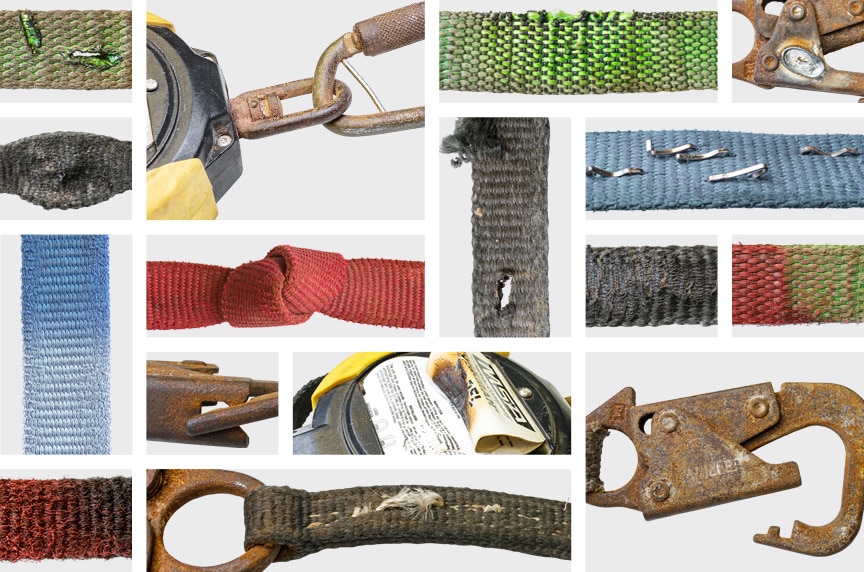
If a harness, lanyard, SRL, or any other component fails inspection, it must be taken out of service immediately. Gear must also be removed after a fall event or if it shows any of the following:
- Illegible or missing labels or inspection records
- Significant cuts, burns, fraying, or chemical damage
- Corroded, deformed, or broken hardware
- Shock absorber indicators that have deployed
- Manufacturer expiration date has passed
Proper Storage Matters
Improper storage of fall protection equipment can damage gear, even if it’s never been used. It is also one of the most overlooked aspects of proper fall protection practices.
Fall protection equipment should be stored in a cool, dry place, and out of direct sunlight. They should also be kept away from chemicals or sharp objects. Harnesses should hang freely or be stored in individual bags—not tossed in the back of a truck.
Is Fall Protection Training an OSHA Requirement?
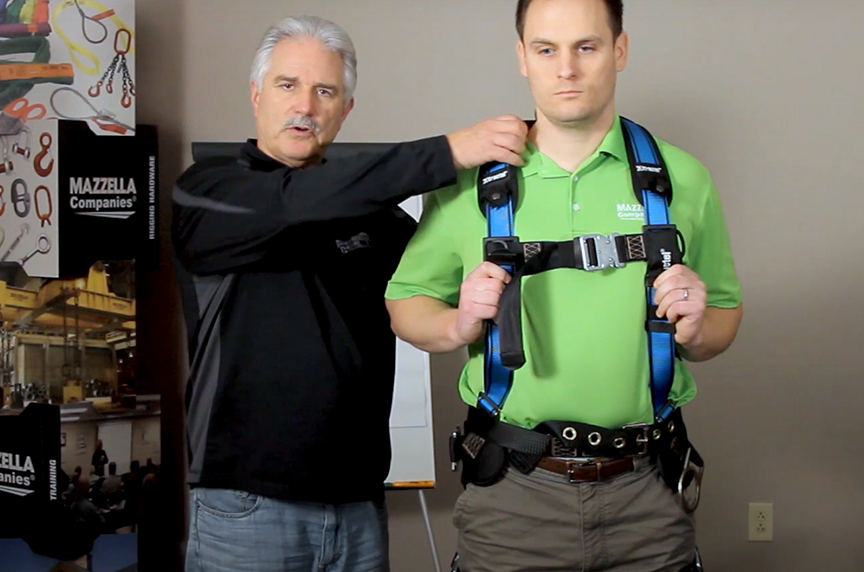
An effective inspection program depends on thorough training. OSHA’s fall protection standards (29 CFR 1910.28 and 29 CFR 1926.503) require employers to provide training to any employee who work in areas where they could be exposed to fall hazards.
Authorized users must be able to perform basic inspections. Competent persons must be trained in-depth to evaluate and document inspections properly.
Your inspection program should include:
- Inspection schedules
- Checklists and SOPs
- Defined roles and documentation standards
- Post-fall removal and reporting procedures
- Clear guidance on equipment maintenance and storage
Mazzella offers fall protection training courses to help companies meet these expectations and keep workers safe.
Do You Need a Working at Height Rescue Plan?
Not only is having a rescue plan an industry best practice, but it’s also an OSHA requirement.
According to OSHA 1926.502(d)(20), it states:
“The employer shall provide for prompt rescue of employees in the event of a fall or shall assure that employees are able to rescue themselves.”
You should also take time to revisit and review your working at height rescue plan with your team. When creating your rescue plan, make sure to:
- Document it
- Rehearse your plan
- Kepp your rescue plan simple
- Maintain circulation
- Be prepared to change your plan
How Can You Avoid Compliance Issues?
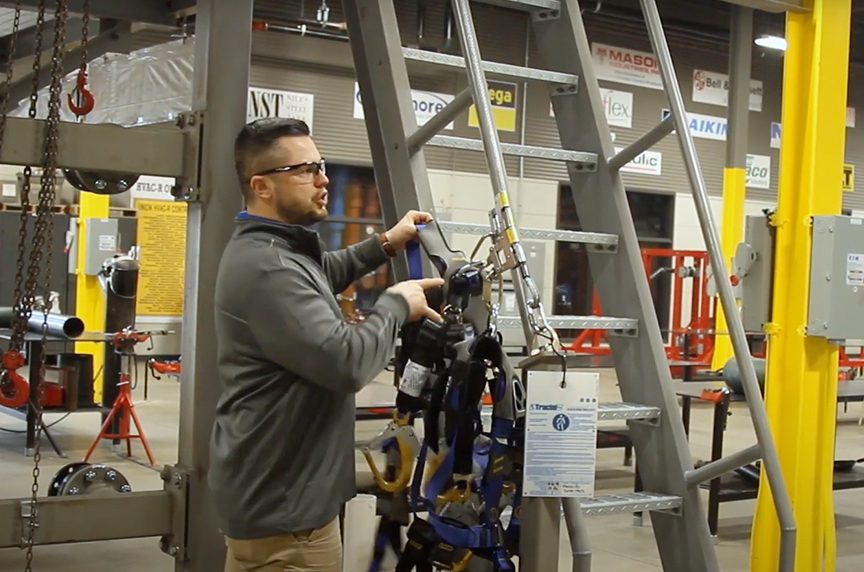
OSHA frequently cites companies for failure to inspect or maintain fall protection equipment. In fact, failure to inspect personal fall protection equipment is one of the top 5 reasons a business isn’t OSHA compliant.
Regular internal audits, up-to-date fall protection training, and consistent documentation are key to avoiding citations—and more importantly, to keeping your team safe.
Final Thoughts
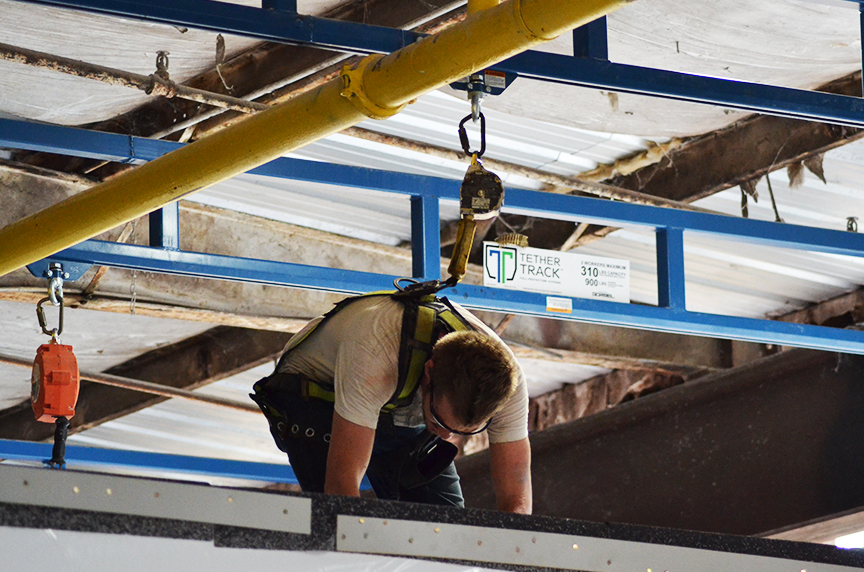
Fall protection systems are only as strong as their last inspection. Daily pre-use checks and formal inspections can be the difference between life and death in a fall scenario. By understanding and following OSHA and ANSI requirements, companies can build a culture of safety that protects their people and their business.
At Mazzella, our Fall Protection team has decades of experience, helping companies in all industries and sectors maintain compliant and safe work environments. Contact one of our team members to learn more.
If you’re unsure where to start or need help improving your inspection program, reach out to Mazzella’s team for guidance or visit our Fall Protection Learning Center for more resources.
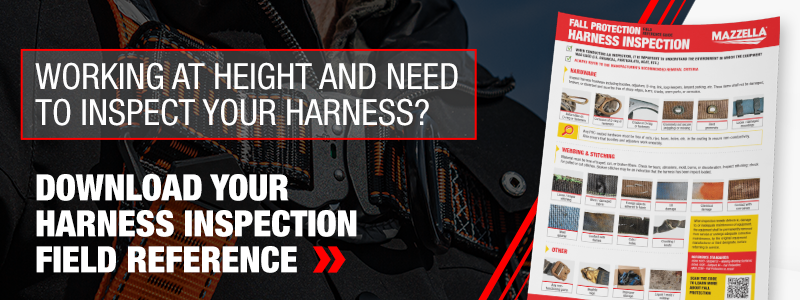
Copyright 2025. Mazzella Companies.
